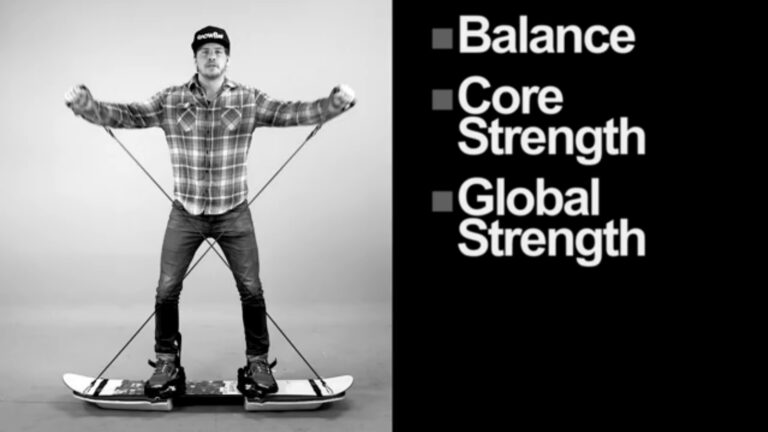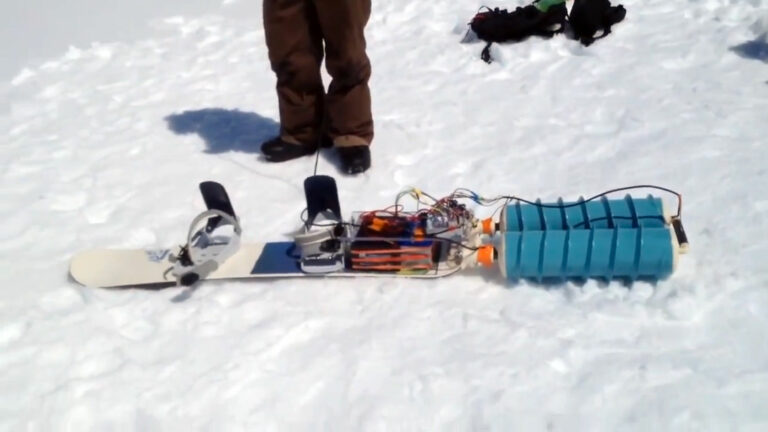The good folk at Recon Instruments sent us a pair of their latest goggles to test this season. We recruited the services of self-confessed technology enthusiast Robin Ponikowski, who packed the goggs in his board bag on a recent trip to Whistler. Here’s his review.
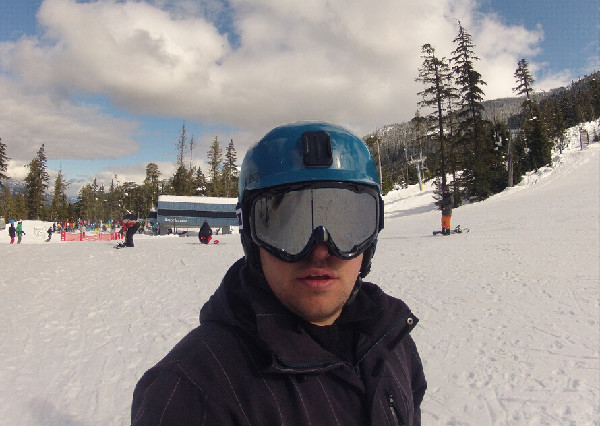
Some people (Whitelines’ columnist Ed Andrews springs to mind) disagree with technology on the hill on a fundamental level. I (it’s safe to say) am not one of those people.
So when I was given the chance to take the Recon Instruments Mod Live HUD goggle out to Whistler for ten days of testing, I was pretty excited.
What boy hasn’t dreamt at some stage of being a fighter pilot? Or strapping into one of those Apache helicopter helmets?
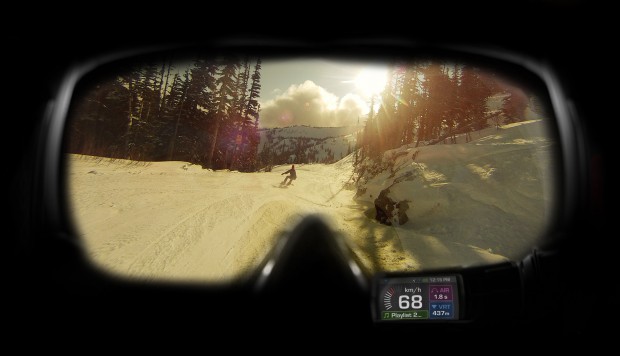
FIT & FEEL
The MOD Live is Recon’s second generation HUD. It fits snugly into any Recon-ready goggle, and there are several companies, including Oakley, who are currently making compatible models.
The goggles we’d been sent to test were the Briko Veloce with a thrama brown metal lens. Despite not being made by the most famous of manufacturers, the goggles on their own proved to be really comfortable.
They provided good visibility in varying light conditions with no fogging issues. The HUD was preinstalled for us but looking at the instructional video online, even the most cack-handed of people wouldn’t struggle to do themselves.
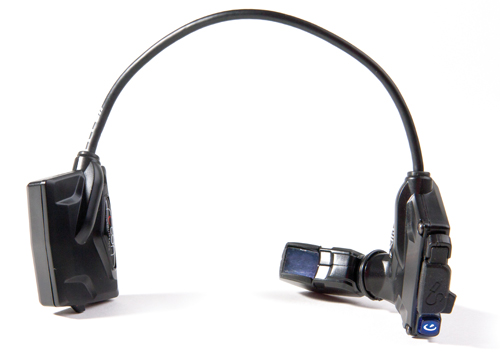
When the system is in place, there was a small LCD screen situated in the bottom right hand corner of the goggles. You can adjust the angle of the screen slightly to suit your eyes but the range of adjustment is limited.
I found that to get the best view, the screen had to angled perfectly – even a small movement meant that parts of the display would become blurred and difficult to read.
The HUD was preinstalled for us but looking at the instructional video online, even the most cack-handed of people wouldn’t struggle to do themselves.
This was a bit annoying, because even with the screen setup nicely, a slight movement of the goggles on your face was all it took to mess up the angle again. I found myself repeatedly adjusting the goggles.
On the plus side, you soon get very used to the presence of the screen. Both before and during the test, I was asked if the HUD was distracting, and I have to say that apart from the adjustments, it really wasn’t.
You have to actively move your eyes down to see what’s on the screen, but this requires far less movement than say scoping out a hit on the side of a run, or checking for skiers over you blind shoulder, so unless you’re going super-fast in a particularly crowded area, it’s not dangerous.
Of course the manufacturers still project a scary-sounding disclaimer when you boot the system up. But I suppose they have to cover themselves in the event that some litigation-loving yank decides to sue, so that’s perhaps not surprising.
This video from Recon Instruments shows you some of the features of the Mod Live System.
FUNCTIONALITY
The HUD screen is controlled via a Bluetooth controller that can be worn like a watch or strapped on to the goggle headband. Oversized buttons make controlling it pretty easy even with gloves on.
The simplicity means that you sometimes find yourself scrolling through a few options before you get to where you want to be, but without having an enormous gauntlet it’s hard to see how they could solve that.
The main features of the HUD are the Dashboard (which uses GPS technology to give you real time tracking and tell you things like speed, altitude, airtime etc.) the Radar, the Live Feed and Music.
The best feature for me was the Radar, which gives you navigation capability. GPS technology tells you your location and the system automatically loads the resort piste map wherever you are.
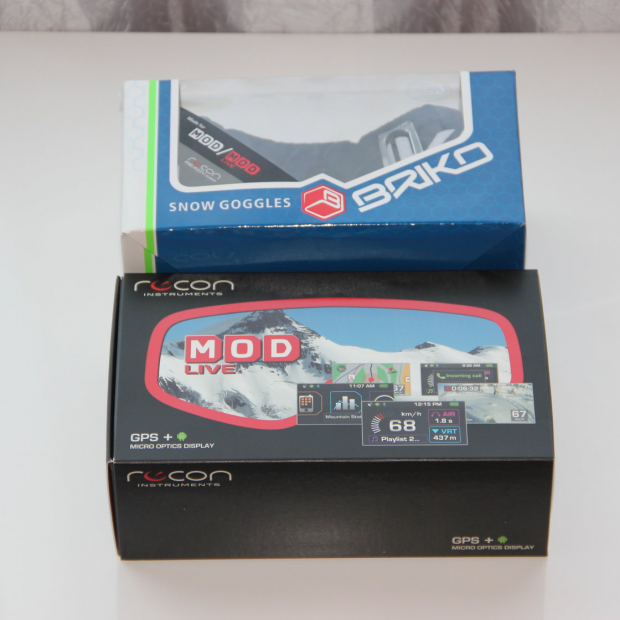
You can switch between three different Radar views: Plain compass, a compass with a piste map (containing with basic trail and lift info) overlaid, or a perspective view. This gives you info about what you’re looking at (peaks, piste names etc.) at any given time.
Not only is this feature pretty cool (c’mon who hasn’t wished they had info about stuff on sight like Arnie in Terminator 2?) but it’s also pretty practical.
It was particularly handy for example when I was in an unfamiliar resort trying to find my way back to a chair in a whiteout. You can also apparently use the system to track ‘buddies’ if they register their phones or other GPS devices on the Recon website.
I didn’t try this, but the safety advantages of knowing where all your mates are on the mountain at any given time are obvious.
Who hasn’t wished they had info about stuff on sight like Arnie in Terminator 2?
The Dashboard was much like the many tracking apps you can get on your smartphone. It has various screens each giving priority to a particular parameter. It’s great if you want to see how fast you’re going while you’re at it.
The Live Feed shows you all of your ‘career’ achievements such as top speed, longest airtime etc and updates when new records have been set.
Pairing your HUD with the Recon Engage app on your smartphone (Android and iOS supported) allows you to see text messages in the Live Feed and also to see who is calling you.
For those that like to shred with tunes, the music feature allows you to control your tracks with ease – so that you can skip that Bieber tune (no names mentioned eh Jeremy Jones!) before it gets embarrassing.
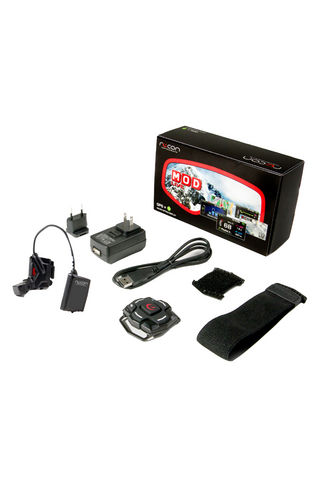
Initially the Recon HUD would require me to re-pair my phone via Bluetooth every time I powered up, which was quite a lengthy process and fairly annoying. Thankfully, a new release of the Engage app rectified this problem.
Similarly, if you own a Contour Camera, you can apparently pair your Recon with it so the screen effectively turns into a viewfinder. This would allow you to to set up shots properly rather than the ol’ point and hope technique that leads to so many badly cropped helmet cam videos, which would be pretty cool.
Plugging the HUD into a computer allows you to upload all of your tracking data to the Recon Engage website, so you can overlay your runs onto Google maps, share the data with social media sites and boast about how rad you were getting.
In this promo video Recon take their HUD Goggles out on the streets to gauge some folks’ reactions.
VERDICT
I loved the presentation of the data, the Radar Navigation, the info it gave you and the ability to control music with ease. Yes the functionality on offer is gimmicky, but then what gadget isn’t?
And as I found out, it has genuine practical applications too. Being able to find your buddies would prevent those situations where you all end up waiting at the bottom of one lift while your mate sails on past, oblivious. And if you found yourself lost and miles off piste, having your own GPS system could well save you and your friends’ lives.
My one quibble with the Recon Mod Live was with that screen. It wasn’t just that it’s not the fighter-pilot style true HUD display I was hoping for (in that the info isn’t actually projected onto the lenses themselves) but also that niggling problem with having to adjust them every time they moved a bit.
That said, the technology in here is truly impressive, and the potential for the future (when perhaps true HUD displays will be cheap enough to make the leap from Apache pilot’s helmets to ordinary shredders’ goggles) is big.
As for whether you’re willing to shell out the fairly considerable amount of cash you’ll need for this futuristic tech (currently £320 without the goggles) well, that’s up to you.

